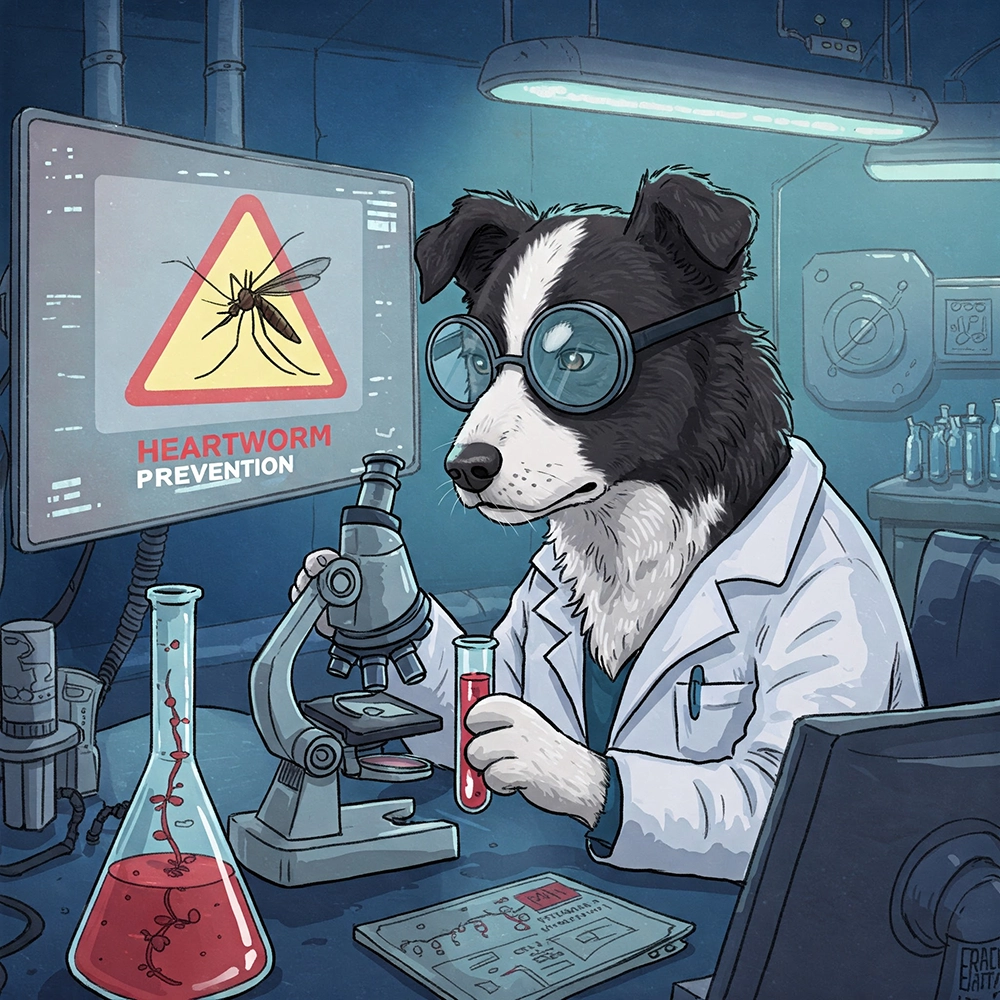Over the past few years the Canadian tick population has been growing, resulting in people having to remove ticks from themselves and their pets.
Ticks are most often found in areas of overgrown grass, weeds and low brush. Most ticks employ an ambush technique where they climb to the tip of the grass/brush waiting for a potential new “host” to walk by. As soon as contact is made, the tick releases the vegetation and jumps aboard. The tick will roam around for a day or two and search for the best spot for a bite and attach themselves for a blood meal. Some ticks will feed for up to 10 days and are visually engorged.
It is best to check your pets daily for ticks. Ticks favour the ears, face, lips, armpits and toes; however, you can find a tick anywhere on the body, so look closely. When ticks bite they bury their head into the skin. When using tweezers to remove the tick from your animal, you can dig into the skin a bit to ensure that you get the tick and her head out completely. If you don't feel comfortable using tweezers, we have “Tick Twisters” available at the clinic. Tick Twisters are handy little tools that look like little crowbars. You slide it under the tick body and gently rotate the plastic handle to pop the tick off.
Lyme Disease is caused by a bacterium called Borrelia burgdorferi. These bacteria can only be found in some Deer Ticks/Black legged ticks (Ixodes scapularis). It is transmitted from tick to person/animal while the tick is attached and taking a blood meal. The illness causes depression, swelling of the lymph nodes, loss of appetite, fever, painful joints and kidney disease. With prompt proper treatment, your pet can be feeling better and on the road to recovery within 48 hours.
We are able to send any removed ticks to a veterinary laboratory for testing. The lab will identify the species of tick and if necessary test to see if it was indeed carrying Lyme disease.
The good news is that there is an annual test to check for tick borne diseases. The test is called 4DX and is performed at your dog's annual heartworm test. The test checks for heartworm disease as well as 3 tick borne diseases.
Professional veterinary products for the Prevention of fleas and ticks are available at Sixteen Mile Veterinary Clinic. We carry topical and oral medications for dogs and topical medications for cats. Spring is here, feel free to contact us regarding which products are best for you and your pets.

Other Articles

As tick populations continue to rise across Canada, pet owners are facing an increasing need to check their furry companions for these persistent pests. Ticks thrive in grassy, overgrown areas and can latch onto pets, searching for the perfect spot to feed. While their bites can be a nuisance, the bigger concern is the potential transmission of Lyme disease and other illnesses. This article explores how to identify, remove, and prevent ticks on your pets, along with the importance of regular testing and professional veterinary treatments to keep them safe.

Think you know what's in your pet's food? Think again! Many common pet food myths have been debunked, from the truth about "holistic" labels to the surprising benefits of by-products. Find out which pet food facts you can trust and which ones are just marketing fluff.

Scratching is a natural and necessary behavior for cats, but it doesn't have to mean shredded furniture. Instead of resorting to declawing, which many believe to be a quick fix, there are humane ways to manage scratching. From nail trims and scratching posts to deterrents and soft nail caps, this article explores effective strategies to keep both your cat and your home happy.

Heartworm disease is a serious condition caused by the parasite Dirofilaria immitis, impacting the heart and lungs of primarily dogs, and sometimes cats and other mammals. **Transmitted by mosquitoes, heartworm can lead to severe cardiovascular issues and potential fatality**. Testing is essential before starting preventative medication, typically given monthly from June to November.

Did you know that heartworm is spread by mosquitoes and that fleas can infest even the cleanest homes? Many pet owners underestimate these parasites, but they can pose serious health risks. Whether your pet is indoor or outdoor, prevention is key. This article uncovers surprising facts about heartworm and fleas, along with essential tips to protect your furry friend.

Think ticks are just tree-dwelling pests? Think again! These tiny arachnids lurk in grass, can survive year-round, and pose serious health risks to both pets and humans. From proper removal techniques to essential prevention tips, this article uncovers the unsettling truths about ticks—and how to keep your furry friend safe.

As tick populations grow due to climate change, a rare but dangerous virus is making headlines: Powassan virus. Unlike Lyme disease, which takes 24 hours to transmit, Powassan can infect you in just 15 minutes. Learn why this virus is a growing concern and how to protect yourself and your pets.